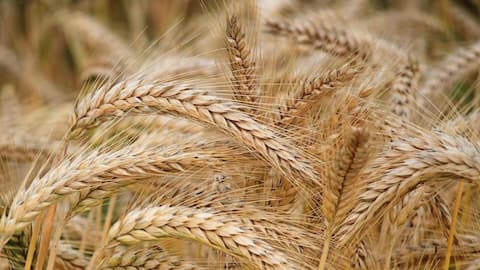Harvesting progress: Global perspective on genetically modified crops
What's the story
The global agricultural landscape has witnessed a profound transformation with the introduction of genetically modified (GM) crops. Engineered to possess specific traits for enhanced productivity, pest resistance, and environmental adaptability, these crops have become integral components of agricultural systems worldwide. Let us explore the widespread adoption and the diverse range of genetically modified crops across the globe.
explaining
What are GM crops?
Genetically modified (GM) crops, also known as transgenic crops have their genetic material altered through genetic engineering techniques. This involves the introduction of specific genes from another organism, often of a different species, to confer desirable traits to the target crop. The primary objectives of genetically modifying crops include enhancing agricultural productivity, improving resistance to pests and diseases, and increasing tolerance to environmental conditions.
Features
Key characteristics and traits
Some GM crops are engineered to tolerate specific herbicides, allowing for more effective weed control without harming the crop. Genetical engineering in such crops can enhance a plant's natural resistance to diseases caused by viruses, bacteria, or fungi reducing the need for chemical insecticides. Genetic modifications may be used to enhance the nutritional profile of crops introducing higher levels of essential nutrients address.
India's example
India's first GM crop: Bt cotton
Bt cotton was officially introduced in India in 2002. It was developed to address the challenges posed by bollworm infestations, a major pest that affects cotton crops and causes substantial yield losses. Since then, several varieties of Bt cotton have been approved for cultivation in India. These varieties express the Cry toxin, a protein from the bacterium Bacillus thuringiensis, providing resistance against bollworms.
Impact in India
Adoption and impact
Bt cotton's adoption in India has been widespread. Farmers embraced the technology due to its potential to reduce pesticide use, control bollworms, and increase cotton yields. One of the primary advantages of Bt cotton has been its positive impact on yields. Farmers have reported increased cotton production, leading to improved economic outcomes for many who rely on cotton farming as a livelihood.
Globally
GM crops across the globe
Genetically modified (GM) crops have been adopted and cultivated in various countries, each with its own set of approved crops and regulatory frameworks. The United States is a major producer of a variety of genetically modified crops like soybean, canola, alfa alpha, cotton, and maize. Brazil, South Africa, China, Canada and Argentina's GM crops include soybeans, maize, canola, sugar beet, papaya and tomatoes.
Global players
Global players and collaborations
Multinational corporations, including biotechnology and agribusiness companies, play a significant role in the development, commercialization, and distribution of genetically modified seeds worldwide. Research institutions, both public and private, contribute to the advancement of genetically modified crops. Collaborations between these institutions and governmental bodies shape the trajectory of GM crop research and adoption.
Safety
Safeguarding health in the GM crop era
International organizations, such as the World Health Organization (WHO) and the Food and Agriculture Organization (FAO), provide frameworks for safety, regulation, and ethical considerations surrounding genetically modified crops at a global level. Rigorous risk assessments of potential health impacts of GM crops, and data analysis on toxicity, are done to ensure that genetically modified organisms (GMOs) intended for human consumption meet stringent safety standards.
